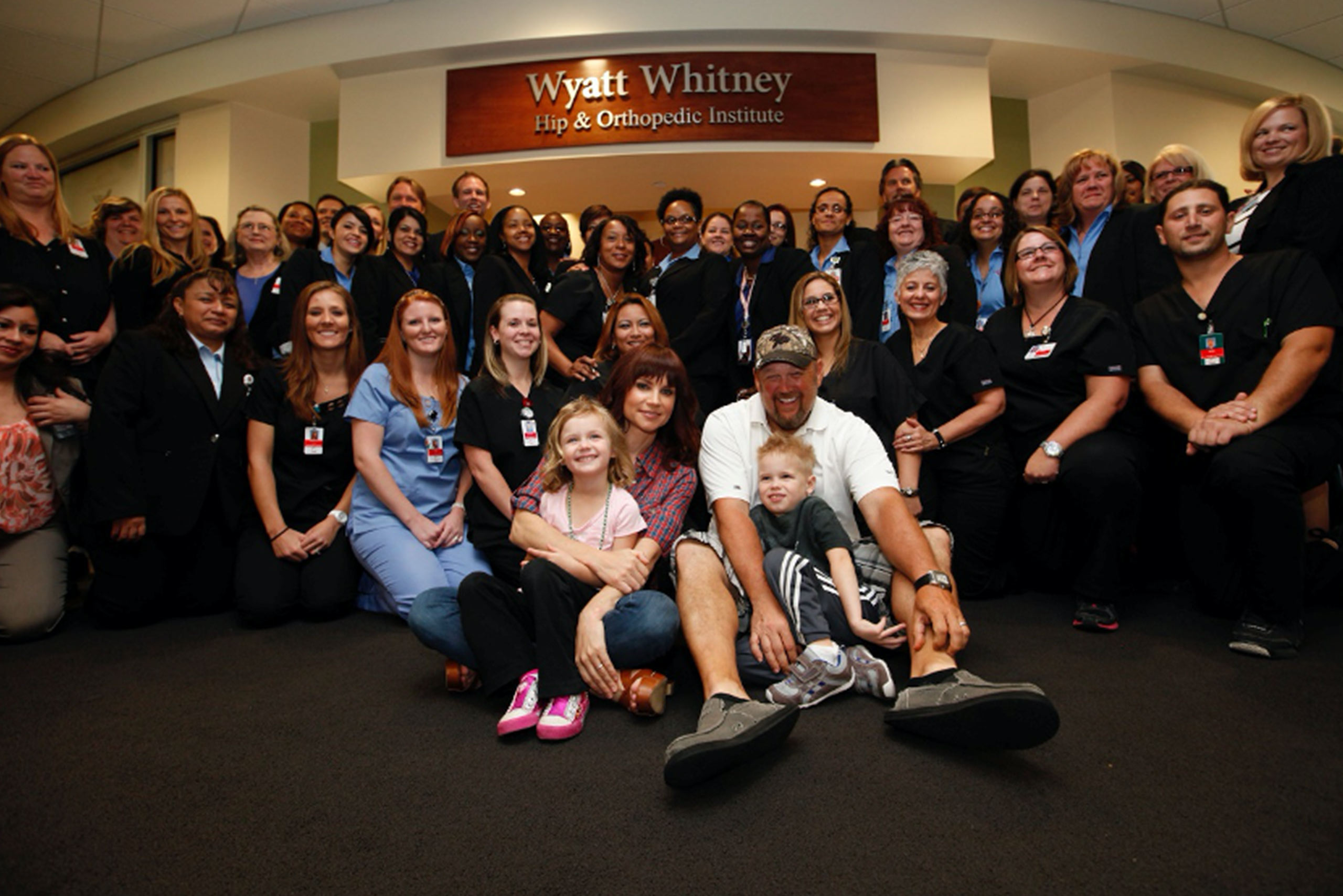Healing the Littlest Cable Guy
The story of Larry the Cable Guy’s involvement with the IHDI
“You Mean It’s Not Just in Dogs?”
My wife and I first became aware of hip dysplasia when our son Wyatt was born with the condition. At the time we thought that the condition was just in dogs. We quickly came to find that not only is it very common, but also that there was very little universal information out there about the condition. You can imagine how difficult it was to hear that “it happens sometimes” and that it “might correct itself”. Those aren’t exactly the kind of answers that new parents want to hear.
After researching on our own, we realized how this condition could cause any number of problems with Wyatt as he got older. We just weren’t willing to accept that “it might correct itself”. Through our research we heard of the Pavlik Harness, a common correctional device, but due to Wyatt’s smaller, 6 pound birth, we would literally have to tape him into the harness.
“For Something So Common, Why Are There No Answers?”
We continued our own research and asked all the questions that any parent would ask to ensure their child would live a normal life. We were floored that no one had information. We wanted facts, figures, percentages instead we got “hit or miss” treatments. We didn’t know how bad his dysplasia was, let alone how long it could take to heal him. We had so many unanswered questions:
- For something so common, why are there no answers?
- Why isn’t there a harness for Wyatt’s size?
- Why isn’t there a reference guide that could tell this younger, less experienced doctor that he needs to wait until a baby grows to a certain size?
- When is it too late to start treatment?
- Will he need surgery?
- How many other parents lay awake at night worrying about their children because no answers were readily available to the medical community?
We got the feeling that kids with these problems are just thrown into a grab bag of things that can go wrong with children’s orthopedics. Since this is eventually curable it doesn’t get a lot of attention.

“The Price is Right”
After our frustration from lack of answers, we took another blow when we came to find that Wyatt’s hip dysplasia had actually gotten worse! We reached out to Dr. Chad Price, an orthopedic surgeon at The Arnold Palmer Hospital. Through our research, we found that not only is he world renowned in the field of hip dysplasia, but The Arnold Palmer Hospital was very close to our home in Florida.
Wyatt was fitted in a new Pavlik Harness, without tape, and even re-sewn to adjust for his condition. We had clearly found the right person! Although we had complete confidence in Dr. Price, we continued to run into problems with a unified thought process for hip dysplasia treatment. As we travel a lot, we had Wyatt’s hip measured by another doctor and the x-rays and information sent to Dr. Price. As it turns out, both doctors measured the hip differently. Why? Why is there no uniform way of taking measurements for something that is such a common condition?
“A Condition Becomes A Quest”
Through an initial donation to The Arnold Palmer Hospital, The International Hip Dysplasia Institute was created. They are researching and networking doctors all over the world to educate them on a universal way to treat hip dysplasia. They are sending harnesses to 3rd world countries and through the website, giving parents a home to get the answers that they need. We also are in the process of sending pediatricians across the nation brochures on hip dysplasia and the institute. It is our hope and dream that parents will be able to confidently walk out of the doctor’s office knowing their child will be treated and doing all the crazy and fun things a child should be able to do!
“What’s Happened?”
That’s the story exactly as we wrote it more than ten years ago. When that photo of Wyatt, our daughter Regan, and the two of us was taken in front of the IHDI sign, we knew that Wyatt wasn’t out of the woods because hip dysplasia can be stubborn even when the early results seem promising. The good news is that Wyatt has passed his 10-year exam and x-rays with flying colors, so it looks like he’s truly cured. We feel blessed and grateful to have an active son who didn’t experience life-long hip problems.
As with most people, our lives have evolved, and we have new interests in addition to stopping hip dysplasia. Nonetheless, our interest in hip dysplasia has continued and even grown to help others who are dealing with this condition. The International Hip Dysplasia Institute has made a huge impact, but there’s much to be done for prevention, diagnosis and treatment of hip dysplasia. Please help if you can, but mainly we hope this website helps you, and we hope the IHDI will continue to provide resources for physicians and researchers around the globe who are working hard to end hip dysplasia and its consequences.



